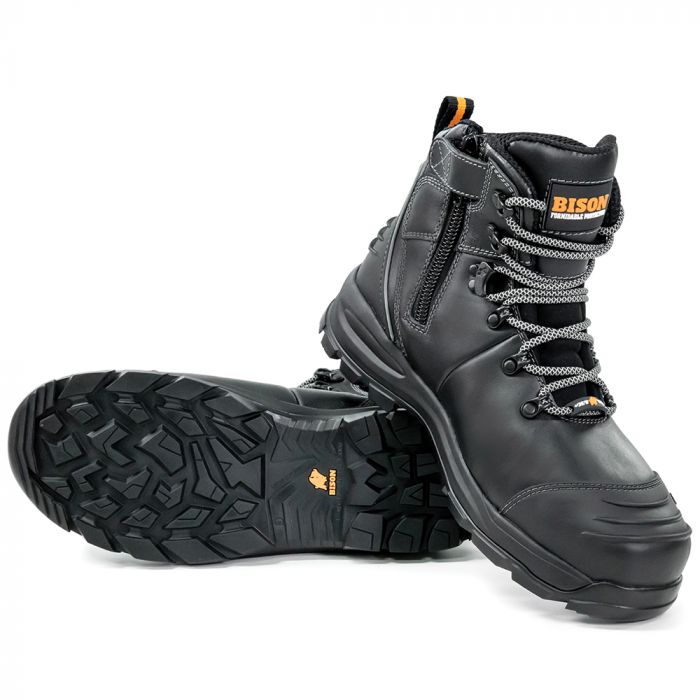In the bustling world of construction, where the clang of hammers and the roar of heavy machinery create a symphony of progress, safety stands as a cornerstone. Among the various safety measures and equipment used in construction, safety footwear holds a paramount position. It’s not just about compliance with regulations; it’s about ensuring the well-being and productivity of every worker on the site.
Understanding the Risks
Construction sites are dynamic environments where hazards lurk at every corner. From sharp objects like nails and glass remains to heavy materials and equipment that can cause crushing injuries, the risks are complex. One of the most vulnerable parts of a worker’s body in such an environment is their feet. Without proper protection, a simple misstep can lead to severe consequences, ranging from minor injuries to permanent disabilities.
The Role of Safety Footwear
Safety footwear, often referred to as steel-toe boots or safety shoes, is designed to mitigate these risks. They are not just regular footwear with added reinforcements; they are engineered with specific features to provide comprehensive protection. Here are some key elements of safety footwear and their importance:
1. Toe Protection
The most recognizable feature of safety footwear is the reinforced toe cap, typically made of steel, composite materials, or aluminium. This component protects the toes from impact and compression injuries, such as those caused by heavy objects falling or rolling over the feet. It’s a fundamental aspect of safety footwear that directly addresses one of the most common risks in construction.
2. Sole Construction
The soles of safety footwear are another critical aspect. They are designed to be puncture-resistant, preventing nails, screws, and other sharp objects from penetrating through the sole and into the foot. Additionally, they offer excellent traction to prevent slips and falls, especially on uneven or slippery surfaces commonly found on construction sites.
3. Electrical Hazard Protection
Many modern safety footwear options also include protection against electrical hazards. This feature is crucial on construction sites where workers may come into contact with live wires or electrical equipment. Insulated soles and heels help reduce the risk of electric shocks, providing an added layer of safety.
4. Comfort and Ergonomics
While protection is important, comfort should not be overlooked. Safety footwear is designed to be ergonomic, providing support for the feet and reducing fatigue, even during long hours of work. Features like cushioned insoles, moisture-wicking lining, and breathable materials contribute to the overall comfort and wearability of safety boots.
5. Compliance and Standards
Safety footwear in the construction industry must meet specific regulatory standards. These standards ensure that the footwear is tested and certified to provide the necessary level of protection.
Choosing the Right Footwear
Selecting the appropriate safety footwear is not a one-size-fits-all decision. Factors such as the nature of the work, environmental conditions, and individual preferences must be taken into account. Here are some tips for choosing the right safety footwear:
Assess the Risks: Identify the potential hazards in your work environment, such as falling objects, electrical hazards, or slippery surfaces. Choose safety footwear that addresses these specific risks.
Consider Comfort: Look for features that enhance comfort, such as cushioning, arch support, and breathable materials. Comfortable footwear not only improves productivity but also encourages compliance with safety protocols.
Check Compliance: Ensure that the safety footwear you choose complies with relevant safety standards and regulations. Look for certification labels and consult with safety experts if needed.
Proper Fit: Proper fit is crucial for safety footwear to be effective. Ensure that the boots or shoes provide ample toe room, a secure heel fit, and overall comfort without being too tight or too loose.
Inspect Regularly: Safety footwear, like any protective equipment, requires regular inspection for wear and tear. Replace damaged or worn-out footwear promptly to maintain optimal protection.
Also Read: Introducing Bison Boots: The Toughest Workboot on The Market
Conclusion
Safety footwear is not just a mandatory accessory in the construction industry; it’s a lifeline for workers. By investing in high-quality safety boots or shoes and promoting a culture of safety awareness, construction companies can create a safer and more productive work environment. Remember, protecting your feet today ensures you can keep stepping forward confidently tomorrow.

